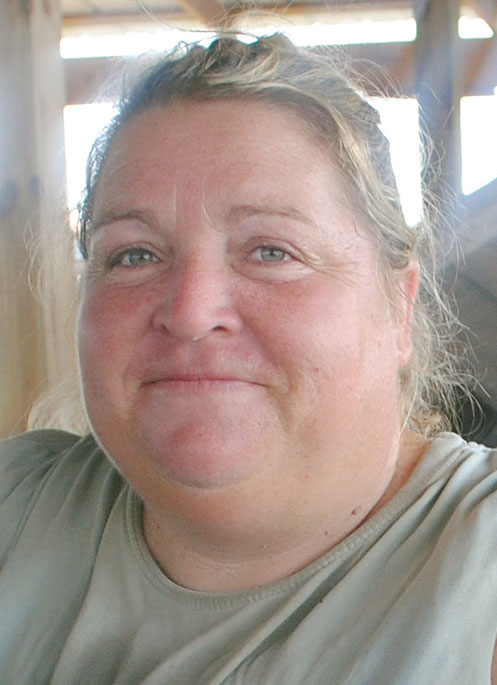
Steve Smith was born in Kansas City, Mo., and raised on a small cow/calf farm in Oklahoma.
Both of his parents worked off the farm for the post office, but he spent important time with his grandparents, Clyde and Susan Perryman, who lived in Arkansas.
Steve remembers liking to bottle feed calves. One day he was taking one of those calves to the barn and was told not to let go of the rope. Naturally, the calf raced away and Steve “bounced his chin on the ground,” but didn’t let go. Another thing he didn’t let go of was his grandfather’s respect for the Charolais breed with its growth speed and better market price.
Steve attended Oklahoma State and earned a degree in agricultural economics. The most important thing he learned was he couldn’t make his living as a farmer because he was starting from scratch and start up costs were prohibitive. In 1984 Steve bought the Buick GMC dealership in Springdale, Ark., and his first 40 acres in 1990, which he eventually sold when he moved his Charolais cattle operation to Hindsville, Ark.
“Half the time I had manure on my boots when I was selling a car,” Steve said.
Three years ago he sold both the dealership and the land in Hindsville, Ark., before he and his wife Kellye purchased 250 acres on a hilltop east of Siloam Springs, Ark. At 61, Steve became a full-time farmer.
“The most important part of what I do is trying to find the time to keep up with the latest advances by reading, consulting and then applying the information to the specifics of my farm,” he said. “My passion and mission is to produce the best cattle I can to help meet the protein needs of the world’s growing population while being a meticulous caretaker of the land so I leave it better than I found it.”
Steve bought the best cows he could when he started in Tontitown, Ark., and began by using AI to improve his herd. His current emphasis is on embryo transfer which he uses with 30 of his cows per year, half in the spring and half in the fall. Others are bred by AI and still others naturally by his two good breeding bulls. His initial donor cows were found by searching for the best cows with superior maternal characteristics that matched his land. He keeps an unusually high rate of replacement heifers, 50 percent, in order to continually raise the bar on his mommas, donors and breeding stock. This means he also raises the bar on those he culls using four determinants: temperament, low birth weight, bone structure and conversion ratio.
As his herd improves, he looks toward bulls that will give him the small better edge that AI and ET provide by tweaking the genetics and the animals he retains. His goal is to be in the top third of the Charolais EPDs. He does not, however, rely solely on EPDs. He uses additional, but equally important, measures such as fat thickness determined by ultrasound and DNA testing.
His birth weights average 75 to 85 pounds and weaning weights are as close to 600 pounds as possible in 210 to 240 days. He raises breeding bull calves to 18 months so he doesn’t have to feed them as long and to get ahead start on the spring bull market.
“Years ago the Charolais became massive and had a reputation for birthing problems,” Steve said. “The breed has moderated in size and I select so that my commercial cow/calf customers can buy a bull that will accommodate whatever their mommas’ breeds are.”
For Steve, supplemental feed and grasses are intricately linked. The soil is tested as is what the cows eat and excrete in order to determine a maximum conversion ratio even considering microbes.
“The process is not simple and requires coordination between extension agents, a nutritionist and other experts on a continual basis because the search for the perfect combination will never end,” Steve explained.
Steve’s feed is a combination of corn, soybeans and ground up alfalfa with the combination changing according to season and cutting edge improvements. The cattle need more fat and energy in the winter to stay warm and less in the summer.
Steve prefers to use chicken litter as his fertilizer, but supplements with commercial mixes according to what soil tests determine are needed in each area. He sometimes adds clover to the fertilizer to add more protein to his pastures. Over seeding with annual wheat and oats not only provides winter forage but also draws nutrients to the top of the soil which helps promote better Bermuda growth during the summer. He purchases hay so that he can maintain the most cattle possible on his land.
Pastures are sprayed for weeds with spot spraying as needed. Currently most of his pasturing is done on a rotational basis though Steve is looking toward shifting towards strip grazing in order to control weeds more naturally.
Above all, Steve is a businessman. He continually works toward the best possible ratio of outputs and imports by spending money on testing and analysis and applying the results to his operation.







